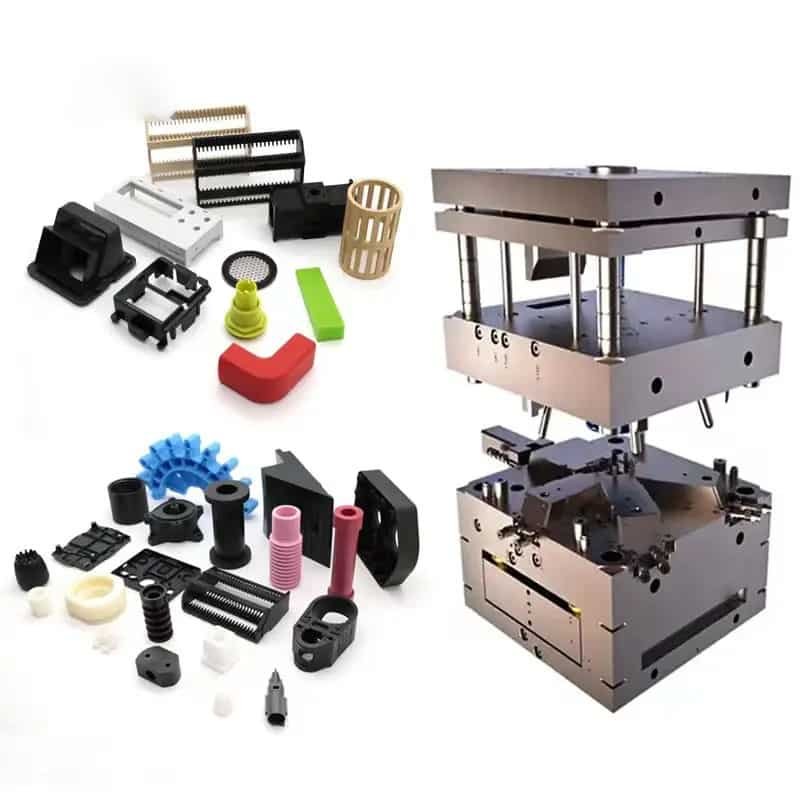1.Empirical calculation method
Mold price = material cost + design fee + processing fee and profit + VAT + mold testing fee + packaging and transportation fees, etc.
For example, the usual formula is: material cost: materials and standard parts account for 15%-30% of the total mold cost; processing fees and profits: 30%-50%;
Design fee: 10%-15% of the total cost of the mold; mold testing: large and medium-sized molds can be controlled within 3%, and precision molds can be controlled within 5%;
Packaging and transportation costs: can be calculated based on actual costs or 3%; value-added tax: 13% (from April 1st)

2.Material factor method
The cost of mold materials can be calculated based on the mold size and material price.
Mold price = (6~10)material cost, forging mold, plastic mold = 6material
Cost, die casting mold = 10 * material cost.
Mold quotation estimation
First, we must look at the customer’s requirements, as the requirements determine the choice of materials and heat treatment process.
- Select the material, draw a rough mold plan, calculate the weight of the mold (calculate the price of the core material and mold base material) and the cost of heat treatment. (Both are rough weight) http://chinamouldnet.com
- Processing costs, depending on the complexity of the mold core, the processing cost is generally 1.5-3:1 compared to the price of the mold core material, and the processing cost of the mold frame is generally 1:1.
- The risk fee is 10% of the total price above.
- Tax
- The design fee is 10% of the total price of the mold.
Quotation strategy and settlement method of molds:

The quotation and settlement of molds is the continuation and result of the mold valuation. From the mold valuation to the mold quotation, it is only the first step, while the ultimate goal of the mold is the settlement after the delivery of the mold manufacturing, forming the final settlement price of the mold. In this process, people always hope that mold valuation = mold price = mold settlement price. However, in actual operation, these four prices are not exactly equal, and there may be fluctuations in error values. This is the problem to be discussed below.
After the mould is valued, it needs to be properly processed and collated into a quotation for the mould, which serves as the basis for signing the mould processing contract. Through repeated negotiations and discussions, a mould price that is mutually acceptable to both parties is finally formed, and a contract is signed. Only then can the mould processing officially begin.
After the mold is valued, it cannot be directly quoted immediately. Generally speaking, a comprehensive analysis based on market conditions, customer psychology, competitors, status and other factors is needed to properly organize the valuation. The first quotation is made by adding 10-30% to the valuation. After bargaining, the quotation can be adjusted according to the actual situation. However, when the negotiated quotation for the mold is less than 10% of the valuation, it is necessary to refine the estimation of the mold and improve it. On the premise of ensuring profitability, a mold processing contract can be signed to determine the final mold price. The mold price is a price agreed upon by both parties and signed on the contract. The mold price formed at this time may be higher or lower than the valuation.

Price. When the negotiated mold price is lower than the break-even price of the mold, it is necessary to re-propose revised mold requirements, conditions, and plans, and reduce some requirements in order to possibly reduce mold costs. After re-estimating, the mold price contract should be signed. It should be noted that molds are specialized products with high technological content, and should not be used at low prices, or even at a loss, to cater to customers. Instead, they should be high-quality and high-priced, putting the quality, accuracy, and life of the mold in the first place, rather than putting too much emphasis on the mold price. Otherwise, it is easy to cause misleading actions. Pursuing low mold prices makes it difficult to ensure the quality, accuracy, and life of the mold. Cheap prices are generally not the way for the mold industry. However, when the mold manufacturing and product development and production are in the same accounting unit or have economic interests, in this case, the quotation for the mold should be based on its cost price.
